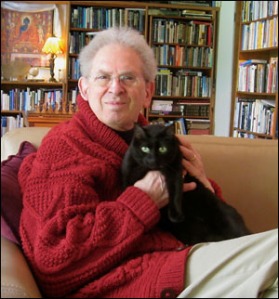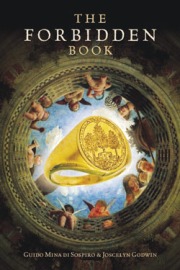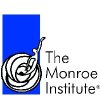 “If the lawful order (κόσμος) hate you, ye know that it hated me before it hated you.
“If the lawful order (κόσμος) hate you, ye know that it hated me before it hated you.
If ye were of the lawful order (κόσμος), the lawful order (κόσμος) would love his own: but because ye are not of the lawful order(κόσμος), but I have chosen you out of the lawful order (κόσμος), therefore the world hateth you.
Remember the word that I said unto you, The servant is not greater than his lord. If they have persecuted me, they will also persecute you; if they have kept my saying, they will keep yours also.
But all these things will they do unto you for my name’s sake, because they know not him that sent me. “
– John 15:18-21
Most reading the charming reprinting of Charles Leland’s Aradia, Gospel of the Witches easily forget how far we are from rural Italy in the 19th century, from the world inhabited by those who remember the Ancient Ways, perhaps more telling, how far we are from the lives of the dispossessed in our own time. Leland’s disarming erudition of Margherita Taluti’s information lulls us into gentle repose, arrested only by the sudden bursts of light when the reality of Margherita’s world sneaks through our contemporary dream.
“In those days there were on earth many rich and many poor.
The rich made slaves of all the poor.
In those days were many slaves who were cruelly treated; in every palace tortures, in every castle prisons.
Many slaves escaped. They fled to the country; thus they became thieves and evil folks. Instead of sleeping by night, they plotted escape and robbed their masters, and then slew them. So they dwelt in the mountains and forest as robbers and assassins, all to avoid slavery.”
An educated Western audience may find it uncouth that such things would be spoken aloud, but they aren’t spoken aloud, they are passed in secret, sub-rosa, in silence. Leland’s passion for various groups on the fringes of the society of his day, the Romany, the Native American, American Voodoo and European witches, gave him a strong sense of Romanticism for the struggles of the people, and provides him with the raw materials for an invocation of this struggle through his writing.
This is not the genteel voice of an educated Marxist lamenting capitalism, nor the hopeful philosophies of Utopian sustainability, this is Lex Talonis, justice driven by the Left Hand under the auspices of Divine Right. This is the uninhibited outcry of those who labor, live and die without ever seeing the fruits of their work, and watching daily while an uncaring elite sit in abstract control over their destinies.
During the Haitian Revolution in the late 18th century, escaped slaves met in the mountains and gathered strength while plotting to overthrow the Colonial French. During a ceremony in the northern mountains at Bois Caiman, which has since passed into a national myth, the freedom fighters called on the gods of their homeland to give them strength, protection and the vigor to overthrown their oppressors.
According to accounts of the ceremony “a woman started dancing languorously in the crowd, taken by the spirits of the loas. With a knife in her hand, she cut the throat of a pig and distributed the blood to all the participants of the meeting who swore to kill all the whites on the island.”
– History of Haiti and the Haitian Revolution
An interesting thing about Leland is that he’s writing from a place of experience. He was active during the American Civil War, both as a propagandist and journalist for the North and as a soldier, and was in Paris during the French uprising in 1848 where he participated in street fighting against the Royalist supporters.
In all of these revolutionary moments, however, we must be honest and recognize that the people do not stir on their own cognizance. Even the Haitian revolution was spurred on by educated Haitians who invoked the power of their traditions to stir the people. It takes someone to spark the collective consciousness, and that someone is more often than not a sympathetic member of the literati.
 The tradition that Leland invokes in Aradia is an idealistic tradition of the people. Unbound by the historical accuracy or literary criticism through the character of Margherita Taluti, who is herself unbound through the mask of Aradia, he attempts to give voice to a deeper current of thought running through the cultural narrative. Just as the African Diaspora Traditions easily slide between Christian saints and African gods, Aradia presents the picture of a living tradition that invokes the Spirits by their Signs without regard for any cultural designations. These are not the civilized gods of Empires, but the unrefined forces of Nature herself.
The tradition that Leland invokes in Aradia is an idealistic tradition of the people. Unbound by the historical accuracy or literary criticism through the character of Margherita Taluti, who is herself unbound through the mask of Aradia, he attempts to give voice to a deeper current of thought running through the cultural narrative. Just as the African Diaspora Traditions easily slide between Christian saints and African gods, Aradia presents the picture of a living tradition that invokes the Spirits by their Signs without regard for any cultural designations. These are not the civilized gods of Empires, but the unrefined forces of Nature herself.
Despite the hesitation of some contemporary pagans over the use of the name Lucifer in the text, the marriage of Lucifer and Diana is not necessarily an amalgam of Judeo-Christian and Greco-Roman traditions. In Latin Lucifer can be interpreted as “Light Bearer” an epitaph for Apollo (also called Φοίβος, Phoibos, “radiant”) who is the brother of Artemis, Artemis being another name for Diana. With Italian being so close to Latin, it may be that the use of Lucifer actually predates the Christian tradition.
Another appellation given to Apollo is “born of the wolf”, and in pre-Hellenistic times (as Jake Stratton-Kent points out in his work Geosophia) Apollo had a definitive role in Cthonic (underworld) rites. The designation given in Aradia of Diana’s husband with “one who of old once reigned in Hell,” may be a subtle clue that it is this Cthonic Apollo, the Oracular Apollo, who is being called upon.
The Invocation to Aradia hints at this when it says, “may there be one of three signs distinctly clear to me: the hiss of a serpent, the light of a firefly, the sound of a frog” The Serpent was sacred to Apollo, and the connection of the firefly to the “light bearer” is self evident, the frog is sacred to Hekate, a Cthonic Greek goddess who, like Diana, is connected to magical rites and nocturnal pursuits.
If this seems a bit academic for folk wisdom, it may very well be. Leland’s recounting may be every bit as free as his critics contend. In his work English Gipsy Songs he laments that none of the Romany he spoke with could give an adequate representation of their tradition. “Not finding what I wanted, I had given up the intention of forming such a collection, when the perusal of a few excellent Rommany ballads by a friend who may fairly claim to be among the ” deepest” of the deep in the language, as well as others by Professor Palmer and Miss Janet Tuckey, suggested to me the idea that poetry, impressed with true Gipsy spirit, and perfectly idiomatic, might be written and honestly classed as Rommany, even though not composed by dwellers in tents or caravans. The experiment was made, great care being taken to avoid anything like theatrical Gipsyism, or fanciful idealisation.”
There are many correspondences in Aradia to beliefs common to European and early American folk magic which Leland would have been familiar with through his extensive reading and passion for the “occult.” The Charm of the Stones Sacred to Diana is surprisingly similar to the seer stone used by Josepth Smith for treasure hunting and scrying while dictating the Book of Mormon. Leland’s niece recounts that he, “not only studied witchcraft with the impersonal curiosity of the scholar, but practiced it with the zest of the initiated,” so it would not be surprising if a bit of his own practice seeped in to the reworking of Margherita’s account of Italian witchcraft.
In fact Leland, in his memoirs, tells of his own ownership of such a stone, only he calls it a “voodoo stone,” and based on the timing of the tale he tells (at the end of the Civil War) his possession of it predates by many years his time in Italy:
“Now, to-day I hold and possess the black stone of the Voodoo, the possession of which of itself makes me a grand-master and initiate or adept…”
– Memoirs, Charles Leland
Similarly the Conjuration of Diana which calls for water, wine and salt, bears resemblance to invocation techniques used by folk magicians discussed in George Oliver’s book from 1875, The Pythagorean Triangle: “It appears that in the time when conjurers could profitably exercise their art, they used to raise spirits within a circle nine feet in diameter, which they consecrated by sprinkling with a mixture of holy water, wine, and salt; that they might be protected from any onslaught of the fiend.”
This combination of ingredients is found in Christian exorcism rites practiced by the Catholic church, or more pointedly rites which would have been found in the Episcopalian tradition that Leland adopted during his time at Princeton:
“These four—water, wine, salt, and ashes—were the ingredients of the Exorcising Water to expel the enemy from a Church at its consecration ; the water symbolising the outpouring of tears, and so penitence ; the wine, exultation of mind ; the salt, natural discretion or wisdom; and the ashes, the humility of penitence.”
– The symbolism of churches and church ornaments, Guillaume Durandus
 And these three can also be equated in alchemical terms to Mercury (water), Sulphur, (wine) and Salt, which in the Paracelsian tradition are the three essential elements that form the basis of reality prior to the four elements of fire, water, earth and air. The rectification of these three also forms the basis of the Philosopher’s Stone. Leland was well acquainted with Paracelsus by the time he wrote Aradia, we find him discussing Gnosticism and NeoPlatonism at Princeton while still a student:
And these three can also be equated in alchemical terms to Mercury (water), Sulphur, (wine) and Salt, which in the Paracelsian tradition are the three essential elements that form the basis of reality prior to the four elements of fire, water, earth and air. The rectification of these three also forms the basis of the Philosopher’s Stone. Leland was well acquainted with Paracelsus by the time he wrote Aradia, we find him discussing Gnosticism and NeoPlatonism at Princeton while still a student:
“ When (Professor Dodd) asked me how it was that I had renegaded into Trinitarianism, I replied that it was due to reflection on the perfectly obvious and usual road of the Platonic hypostases eked out with Gnosticism. I had…learned…that ” it was a religious instinct of man to begin with a Trinity, in which I was much aided by Schelling, and that there was no trace of a Trinity in the Bible, or rather the contrary, yet that it ought consistently to have been there…For man or God consists of the Monad from which developed spirit or intellect and soul; for toto enim in mundo Ivcet Trias cujus Monas est princeps, as the creed of the Rosicrucians begins (which is taken from the Zoroastrian oracles)…and it is set forth on the face of every Egyptian temple as the ball, the wings of the spirit which rusheth into all worlds, and the serpent, which is the Logos.”
– Memoirs, Charles Leland
Here we see the core of Leland’s belief, “there was no trace…yet…it ought consistently to have been there.” Aradia is a classic work of Pastoral poetry, the work of an educated Romantic who longs for the Golden Age of Nature. Through the use of vox populi he takes the unrefined elements of folk culture and, in an alchemical moment of myth building, creates what “should be there.” He separates out the dross of true poverty and seeks the essence of hunger, desperation and wisdom that exists in the lives of the dispossessed.
Leland takes what the common people already know, but have no chance to define, and shows them a reflection of themselves. Reworking their traditions with the purpose of returning to them the freedom that they already have, while undermining the bonds of control that have been put on them by social conventions that laud ostentation while rejecting the simplicity of life. It is therefore no surprise that Aradia has had a foundational affect on contemporary witchcraft, that was the very purpose of the book.
Margherita Taluti’s information alone could not complete his vision, but it provided the ground and reality from which he could perfect the Work. It contained the Prima Materia missing from his own experience and provided the Key. Leland’s practice is no different than Ovid, Homer, Chaucer, Boccacio, Shakespeare, or any of the great Traditional Poets who took the popular mythologies and legends of their time and re-veiled them.
As he remarked to one of his fellow folklorists, “I am proud to be a first pointer-out – just as I am of having been acknowledge to be the first discoverer of Shelta…also of Italian-Latin witch lore and mythology, which latter has not as yet been credited to me, but will be some day.”
Through an alchemical invocation of the popular voice Charles Leland created a vision for the dispossessed to lay claim to. His ‘gospel of the witches‘ was the ‘good news‘ of the free spirit, the reclamation of the Edenic purity of Humanity that “shall dance, sing, make music, and then love in the darkness.” It is the message to the establishment that “the true God the Father is not yours; for I have come to sweet away the bad, the men of evil, all will I destroy!” It’s a mark of success that Leland’s work has been reviled by the Academy, he wasn’t writing it for them, he was writing it for the People.
Note: The folks at Red Wheel/Weiser were kind enough to provide a copy of Charles Leland’s Aradia, Gospel of the Witches for research and review. Check out Bob Freeman’s review of Aradia and Freeman Presson’s review as well.
th e T h e o s o p h ic a l S o c ie tya n d th e G o ld e n D a w n – d re w a le a f
o u t
o f
P a s to r
A n d r e a e ‘s
b o o k ,
a n d
s e t
o u t
t o
b u ild
th e ir
o rg a n iz a tio n o n
a m yth propagated as reality.
M adam eB la v a ts k y c la im e d to b e in c o m m u n ic a tio n w ith S e c re t M a s te r s in T ib e t. A n d the story behind the G olden D aw n was at least as circum stantial as th e
a c c o u n t o f th e
life o f R o s e n k r e u z .
I n
1885, according
t o
th is
sto ry , a c le rg y m a n
n a m e d W o o d fo rd w a s ru m m a g in g th ro u g h th e
books on
a second-hand
stall in
F a rrin g d o n
R oad
w hen
he cam e
across a m anuscript w ritten in cipher; a friend, D r W illiam
W ynn W e s tc o tt, id e n tifie dth e c ip h e r a s o n e in v e n te d b y a fifte e n th -c e n tu ry a lc h e m is t, T r ith e m iu s .I t p ro v e d
to c o n ta in fiv e m a g ic a l ritu a ls fo r introducing newcom ers into a secret society. In the m anuscript there w as also a letter, w hich
s ta te dth a t a n y o n e in te re s te d in th e ritu a ls
s h o u ld
c o n ta c t
a
c e rta in
F ra u le in
S p re n g e l
i n
S tu ttg a rt.
I t
w as
F ra u le in
S p re n g e l, th e
re p re s e n ta tiv e o f aG erm an
m agical order,
w h o g a v e W e s tc o tt p e rm is s io n to fo u n d th e G o ld e n D a w n .
T he
c ip h e r
m anuscript
m ay
ju s t
p o s s ib ly
h a v e
re a lly
e x is te d
(although it w as not picked up on a book stall in Farringdon R oad); th e le tte r a b o u t F ra u le in S p re n g e l c e rta in ly d id n o t; n e ith e r d idth a t la d y
herself. Y et the
s to r y
a c c o m p lis h e d its e ffe c t,a n d th e G o ld e n
D aw n grew
in to o n e o f th e m o s t im p re s s iv e m a g ic a l o r g a n iz a tio n s o f
th e
la te
n in e te e n th
c e n tu ry .
 The radio antennae is damaged – enigmatic strains of static come to life in white noise, mercurial music and the occasional burst of discernable speech – we’ve tuned in to a local gospel radio station playing songs set to the end of time and messages of faith for the last days. We are near Elberton, Georgia and the area, even with the radio off, is awash in ambient memories. The town, a global supplier of monuments to makr graves as far away as Japan, supports its economy with the inevitable end of human life and the birth of memories – the people here are proud of their craft.
The radio antennae is damaged – enigmatic strains of static come to life in white noise, mercurial music and the occasional burst of discernable speech – we’ve tuned in to a local gospel radio station playing songs set to the end of time and messages of faith for the last days. We are near Elberton, Georgia and the area, even with the radio off, is awash in ambient memories. The town, a global supplier of monuments to makr graves as far away as Japan, supports its economy with the inevitable end of human life and the birth of memories – the people here are proud of their craft.





 “If the lawful order (κόσμος) hate you, ye know that it hated me before it hated you.
“If the lawful order (κόσμος) hate you, ye know that it hated me before it hated you. The tradition that Leland invokes in Aradia is an idealistic tradition of the people. Unbound by the historical accuracy or literary criticism through the character of Margherita Taluti, who is herself unbound through the mask of Aradia, he attempts to give voice to a deeper current of thought running through the cultural narrative. Just as the African Diaspora Traditions easily slide between Christian saints and African gods, Aradia presents the picture of a living tradition that invokes the Spirits by their Signs without regard for any cultural designations. These are not the civilized gods of Empires, but the unrefined forces of Nature herself.
The tradition that Leland invokes in Aradia is an idealistic tradition of the people. Unbound by the historical accuracy or literary criticism through the character of Margherita Taluti, who is herself unbound through the mask of Aradia, he attempts to give voice to a deeper current of thought running through the cultural narrative. Just as the African Diaspora Traditions easily slide between Christian saints and African gods, Aradia presents the picture of a living tradition that invokes the Spirits by their Signs without regard for any cultural designations. These are not the civilized gods of Empires, but the unrefined forces of Nature herself. And these three can also be equated in alchemical terms to Mercury (water), Sulphur, (wine) and Salt, which in the Paracelsian tradition are the three essential elements that form the basis of reality prior to the four elements of fire, water, earth and air. The rectification of these three also forms the basis of the Philosopher’s Stone. Leland was well acquainted with Paracelsus by the time he wrote Aradia, we find him discussing Gnosticism and NeoPlatonism at Princeton while still a student:
And these three can also be equated in alchemical terms to Mercury (water), Sulphur, (wine) and Salt, which in the Paracelsian tradition are the three essential elements that form the basis of reality prior to the four elements of fire, water, earth and air. The rectification of these three also forms the basis of the Philosopher’s Stone. Leland was well acquainted with Paracelsus by the time he wrote Aradia, we find him discussing Gnosticism and NeoPlatonism at Princeton while still a student:











